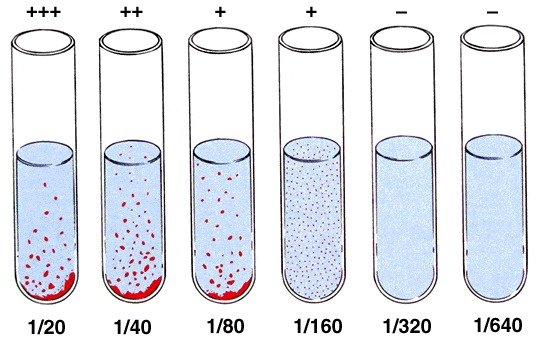The Widal Test is a diagnostic tool used to detect typhoid fever, a bacterial infection caused by Salmonella typhi and Salmonella paratyphi. It is widely used in clinical settings to confirm the presence of antibodies against these bacteria in the bloodstream.
What is the Widal Test?
The Widal Test identifies specific antibodies (agglutinins) in the blood that react to the antigens of Salmonella. These antigens are categorized as:
- O Antigen: Related to the bacterial cell wall.
- H Antigen: Associated with bacterial flagella.
A significant increase in these antibodies indicates an active or recent typhoid infection.
Why is the Widal Test Important?
-
Typhoid Fever Diagnosis
- It helps confirm the presence of typhoid fever.
-
Affordable Testing
- A cost-effective option compared to advanced molecular tests.
-
Quick Results
- Provides results within a day, aiding timely treatment.
-
Widely Available
- Accessible in most diagnostic labs worldwide.
Who Should Take the Widal Test?
-
People with Prolonged Fever
- Especially if it persists for more than 3-5 days.
-
Individuals with Travel History
- Travel to areas with poor sanitation increases risk.
-
People Exposed to Contaminated Water or Food
- Typhoid spreads through ingestion of contaminated sources.
-
Patients with Symptoms of Typhoid
- Symptoms like headache, abdominal pain, and loss of appetite.
Symptoms Indicating the Need for a Widal Test
-
High Fever
- Persistent fever, often peaking in the evening.
-
Weakness and Fatigue
- A common sign of typhoid fever.
-
Abdominal Pain
- Pain in the lower abdomen or stomach area.
-
Loss of Appetite
- Decreased interest in food.
-
Headache and Body Aches
- General discomfort and malaise.
How is the Widal Test Performed?
-
Blood Sample Collection
- A sample of blood is drawn from the arm.
-
Antibody Reaction
- The blood serum is mixed with Salmonella antigens to check for agglutination (clumping).
-
Result Interpretation
- The amount of antibody titer determines the infection status.
What Do the Widal Test Results Mean?
-
Negative Result
- Indicates no significant antibodies for typhoid bacteria.
-
Positive Result
- Presence of significant antibody levels suggests typhoid fever.
-
Titer Levels
- A titer of 1:160 or higher is often considered indicative of infection.
Normal Range of Widal Test
- O Antibody Titer: Below 1:80
- H Antibody Titer: Below 1:160
Higher values require clinical correlation with symptoms and history.
Limitations of the Widal Test
-
Cross-Reactivity
- Can give false positives due to other infections.
-
Requires Clinical Correlation
- Symptoms and travel history are critical for interpretation.
-
Not Definitive
- A positive result doesn’t always confirm typhoid; additional tests may be needed.
Preparation for Widal Test
-
No Special Preparation Needed
- No fasting or dietary restrictions are required.
-
Inform About Medications
- Antibiotics can affect the accuracy of results.
-
Stay Hydrated
- Makes the blood sample collection easier.
Advantages of Widal Test
-
Non-Invasive
- Simple blood test with minimal discomfort.
-
Quick Diagnosis
- Results are available within 24 hours.
-
Affordable
- Cost-effective compared to other diagnostic methods.
-
Early Detection
- Helps diagnose typhoid at an early stage.
Disadvantages of Widal Test
-
False Positives
- Common in regions with high typhoid prevalence.
-
Less Sensitive
- May not detect early-stage infections.
-
Requires Skilled Interpretation
- Results need to be analyzed carefully to avoid misdiagnosis.
Treatment After a Positive Widal Test
-
Antibiotics
- Commonly prescribed medications include ciprofloxacin and ceftriaxone.
-
Supportive Care
- Includes hydration and proper nutrition.
-
Follow-Up Testing
- Repeat tests to ensure the infection is resolved.
-
Rest and Recovery
- Adequate rest is crucial for recovery.
Where to Get the Widal Test?
-
Hospitals
- Most hospitals offer this test in their pathology departments.
-
Diagnostic Centers
- Labs like SRL, Dr. Lal PathLabs, and Thyrocare provide this test.
-
At-Home Services
- Many labs now offer home sample collection for convenience.
Cost of Widal Test
- The test generally costs between ₹300 to ₹800, depending on the location and lab.
FAQs About Widal Test
1. Is the Widal Test Painful?
- No, it’s a simple blood test with minimal discomfort.
2. How Long Does it Take to Get Results?
- Results are typically available within 24 hours.
3. Can Widal Test Be Done at Home?
- Yes, many labs offer home sample collection services.
4. Is the Test Safe for Pregnant Women?
- Yes, it is safe and helps in timely diagnosis.
5. How Often Should the Test Be Taken?
- Only as recommended by a doctor based on symptoms.
Conclusion
The Widal Test remains an important diagnostic tool for typhoid fever, especially in areas with limited access to advanced testing. While it has some limitations, its affordability and widespread availability make it a preferred choice. Early diagnosis and treatment of typhoid fever can prevent complications and ensure a quicker recovery. Consult your healthcare provider if you suspect symptoms of typhoid, and take the necessary steps to protect your health.









